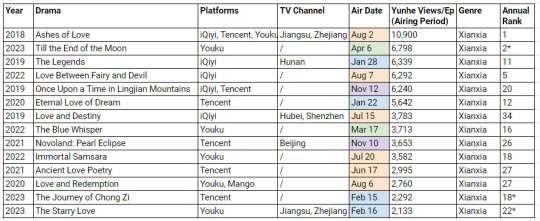#women’s ashes 2022
Explore tagged Tumblr posts
Text

Sara Grace Wallerstedt by Peter Ash Lee for Saks Fall 2022
#sara grace wallerstedt#peter ash lee#saks fifth avenue#ad#advertising#fashion#mode#moda#model#models#women's fashion#womenswear#style#beauty#fall 2022#my upload
11 notes
·
View notes
Photo





tala and the cast & crew of best new play winner english at the obie awards. #womenlifefreedom
20 notes
·
View notes
Text


[ID: One puffy circle of bread, and three which have been halved to show an internal pocket, on a striped blue and white kitchen towel. End ID]
خبز الكماج / Khubiz al-kmaj (Palestinian flatbread)
Khubiz al-kmaj is a thin flatbread with an internal pocket. It is commonly eaten with breakfast to scoop up dips such as hummus, used to eat stews, served alongside main dishes, and used to make sandwiches and to wrap falafel. "خُبْز," pronounced "khubz" or (in Levantine varieties of Arabic) "khubiz," comes from the root خ ب ز (kh-b-z), which also produces the word "خَبَزَ" "khabaza" (Levantine: "خَبَز" "khabaz"), "to bake."
This bread is eaten across the Levant and in Greece, with slight differences in terminology and style. It is variously called "خُبْز العَرَبِيّ" (khubz al-'arabiyy; Arabian bread), "خُبْز "البَلَدِيّ (khubz al-baladiyy; bread from my country), or (occasionally) "خُبْز البيتة" or "البيتا" (khubz al-bita), a borrowing from "pita." ("Pita" itself is perhaps from Greek "πίτα" "pita," or the modern Hebrew "פיתה.") The bread is referred to as "khubiz al-kmaj" in Palestine, from the Turkic "kömeç" / كُمَجْ ("bread baked in ashes"). The collective term for the bread in general is كماج (kmāj); each individual piece of bread is referred to with the singulative "كماجة" (kmāja).
Today, kmaj is frequently made with white flour; some people add olive oil or milk powder to ensure a very soft dough. Leila el-Haddad writes that a more traditional method omits milk and uses whole white spring wheat, a whiteish wheat grain harvested in late spring and ground without removing the bran.
Since the late 20th century, many Palestinian households have used an electric cooker (طنجرة الكهرباء; ṭanjara al-kahrabā') to cook kmaj, placing one kmaja inside of the chamber and one on top and allowing both to bake at the same time. These aluminum and tin cookers, which were invented in Gaza and became popular there during the first intifada in the late 1980s, are designed to route electricity through a metal pipe or spiral wire on the underside of their lids, heating both the top and the inside of the cooker simultaneously.
The cookers' popularity can be attributed in part to a curfew that Israel imposed on Gazan refugee camps during the intifada, supposedly in an attempt to restrict the movements of resistance fighters. Refugees in the Jabalia camp in the north, for example, unable to afford home stoves, and without the necessary outdoor space to make familial clay ovens, would have to wait in line for hours every day to get bread from shared ovens, risking curfew violations; household electric cookers were far more convenient. The success of local industry and innovation in the form of Gazan-manufactured technology was also symbolically and strategically important during the first intifada, in which Palestinians employed strikes and boycotts (largely organized by women) of Israeli companies and goods as a strategy of resistance to occupation.
An electric cooker is still today considered a very important tool, as it spares families the need to purchase kmaj (the price of which was soaring compared to the cost of flour in the 2010s, and which was often of inferior quality compared to what could be made at home). They are frequently given as wedding or housewarming presents. Lack of access to electricity, though, imposes a limiting condition on the usage of these cookers, as Israel has for over a decade strangled the flow of power to Gaza: Abier Almasri wrote in 2017 that tasks such as cooking and laundry had to be rushed during the four or so hours a day when electricity was available. In this environment, electric cookers are useful in that they can prepare a lot of bread in a short period of time. Fathia Radwan said in 2022 that she would wake up early, after the nightly power outage, to prepare more than 100 loaves of bread at a time for her family of nine.
Today, the taxes that Israel levies on imports of raw materials into Gaza makes the cost of new electric cookers, which sometimes exceeds 120 shekels (37 USD), too expensive for some families to afford. The difficulty and expense of importing materials, and the impossibility of exporting goods to foreign markets with the advent of the 2007 siege, also limit the number of factories in Gaza that are able to manufacture these cooking pots. The aluminum industry, introduced to Gaza in the 1960s and once the basis of a manufacturing and economic renaissance in the region, deteriorated as a result of the siege, as factories were no longer able to export goods to the West Bank and were newly reliant on imports of raw materials from Egypt. Even parts to repair electric cookers are expensive, due to a tax levied on items judged by Israel to have a "dual," i.e. a possible civilian and military, use.
Still, repairman Iyad Faraj estimates that over half the homes in Gaza have and use an electric cooker, as maintaining, repairing, and operating one is cheaper than having a gas pipe installed (at 68 shekels, 20 USD) and purchasing gas. Electric pots thus stand in many homes as both a utilitarian item, and a symbol of Palestinian ingenuity and resistance to Israel's attempts at impoverishment and starvation.
Support Palestinian resistance by contributing to Palestine Action’s bail fund or to Palestine Legal’s defence fund, by attending court or making a sign to support the Elbit Eight, or by buying an e-sim for distribution in Gaza.
Ingredients:
500g (4 cups + 3 Tbsp) white whole wheat (spring) flour
1/2 Tbsp (5g) active dry yeast
1/2 Tbsp (6.25g) vegetarian granulated sugar
1/2 Tbsp (7.25g) kosher salt
About 2 1/4 cups (530mL) room-temperature water, divided
Olive oil
White whole wheat flour is flour that has a white color once ground, despite the fact that it includes both the bran and the germ of the wheatberry. It is milled from white spring wheat (so named because it is harvested in late spring).
You may instead mix white all-purpose flour and brown whole wheat flour in your desired proportion. Keep in mind that whole wheat flour will need more water and more kneading than white flour. If you’re using all white flour, you will need about 1 1/4 cup (300mL) water.
Instructions:
1. Mix flour, yeast, sugar, and salt in a large mixing bowl. Add water gradually until dry ingredients come together into a sticky dough.
2. Knead the dough on the countertop or in a wide, shallow bowl until smooth, about 5 minutes. (If using whole wheat or white whole wheat flour) continue incorporating water into the dough as you knead to maintain a tacky texture.
3. Fold the dough into a ball and return to the bowl, seam-side down. Pat the top of the dough with some olive oil, cover the bowl, and let rise for an hour.


4. Pinch the dough into about 8 balls of equal size (about 110g each). Cover and let rest for 10 minutes.

5. On a lightly floured surface, roll out each ball of dough into a circle about 1/4" (1/2cm) in thickness. Set dough circles on a surface prepared with parchment paper and cover closely with a kitchen towel or plastic wrap. Let rest and ferment for at least 1 and up to 10 hours.
An overnight rest is traditional in Palestine and will create a more complex flavor in the bread (see note below).

6. Remove each circle of dough from its resting place with a metal spatula and roll it out to a 1/4” thickness again. Preheat a baking stone or sheet in the top third of an oven at 500 °F (260 °C), and then cook breads in the oven for three minutes, until large bubbles have begun to form.

7. Flip bread over and cook for another 3 minutes on the other side, until golden brown and puffed up completely.
8. Wrap breads in a kitchen towel or tea towel and allow to steam for a few minutes while the others cook.
Notes
The climate where I live is dry enough that I have discovered a risk of my breads becoming crackers if I leave them out overnight. The dried-out flatbread does puff up in the oven, but the resulting product is not as nice and fluffy as it should be.
Through experimentation, I have found the best method of both preventing drying out and guaranteeing that the flatbreads will puff up during cooking the next day is:
1. Roll out the dough and place dough circles on a lightly oiled surface. Cover them closely with lightly oiled plastic wrap.
2. The next day, fold dough circles back into balls. Place seam-side down and roll out again on a lightly floured surface.
3. Bake as described above.
If you live in a humid environment, the first instructions given in the recipe above should work for you.
424 notes
·
View notes
Text
Content warning: This article includes scenes of physical and sexual harassment and assault.
The trouble in Antarctica started in Boston. It was August 1999, and Stanford geologist Jane Willenbring was then a 22-year-old self-described “country bumpkin.” She had just arrived to start her master’s in earth science at Boston University. As an undergrad with an oboe scholarship at North Dakota State University, she’d studied beetle fossils found in Antarctica and learned how, millions of years ago, the now frozen continent once pooled with freshwater lakes. “That’s not so different from the conditions we might expect in the future,” she says. She wanted to explore this critical science. “It seemed really important for future global climate change,” she says.
Of all the geologists, few were more renowned than the one Willenbring had gone to Boston to study under: 37-year-old David Marchant. Marchant, a scruffy professor at BU, was a rock star of rock study. He was part of a research group that rewrote Antarctic history by discovering evidence of volcanic ash, which showed that Antarctica had been stable for millions of years and was not as prone to cycles of warming and cooling as many thought. To honor his achievements, the US Board on Geographic Names approved the naming of a glacier southwest of McMurdo Station, the main research base on Antarctica, after him.
Willenbring says Marchant had insisted on picking her up at the airport, an offer she thought was nice but strange. It got stranger when he started making her feel bad for his gesture, which she hadn’t asked for. “I’m missing a Red Sox game,” she recalls him chiding her. “You really should have picked a better time to fly.” He asked whether she had a boyfriend, how often she saw him, and whether she knew anyone in Boston or would be alone. In a few months, she’d be heading with him on a research trip to Antarctica and the region with his big chunk of namesake ice. “It was almost like a pickup line,” she recalls, “‘I have a glacier.’”
But it’s what happened in the glacier’s shadow that led Willenbring to take on Marchant and become the first to expose the horrors faced by women at the bottom of the world. A report released in August 2022 by the National Science Foundation, the main agency funding Antarctic research, found that 59 percent of women at McMurdo and other field stations run by the US Antarctic Program said they’d experienced sexual harassment or assault. A central employer, Leidos, holds a $2.3 billion government contract to manage the workplaces on the ice. One woman alleged that a supervisor had slammed her head into a metal cabinet and then attacked her sexually. Britt Barquist, a former fuel foreman at McMurdo, says she had been forced to work alongside a supervisor who had sexually harassed her. “What was really traumatic was telling people, ‘I’m afraid of this person,’” she says, “and nobody cared.”
With a congressional investigation underway, Willenbring is sharing her full story for the first time with the hope of inspiring others to come forward and claim the justice they’ve long deserved. But even now, decades after she first got into Marchant’s car, she can’t help asking herself how, and why, the nightmare happened in the first place. “You never hear a women-in-science panel where people are talking about stuff like I do,” she says, “because they’re smart enough to fucking run.”
145 notes
·
View notes
Text

x | steve vivian | 30/1/2022
The unholy experience of watching Daniil Medvedev lose, even when he wins
"Will you answer my question? Look at me. I'm talking to you."
Like an irate chef taking out the night's frustrations on a down-on-their-luck kitchen hand, Daniil Medvedev delivered another masterclass in melting down during his semifinal defeat of Stefanos Tsitsipas on Friday night.
Has anyone ever sincerely asked someone, "are you stupid?", and come out of the exchange looking good?
It didn't do all that much to endear Medvedev to viewers when he posed that question to chair umpire Jaume Campistol during his semi-final meltdown, berating Campistol for doing nothing about Tsitsipas's father supposedly coaching his son from the stands.
Ironically, as the commentators pointed out on the telecast, Tsitsipas really doesn't like it when his father coaches him during games.
If this was all you knew about the two players, you might not be surprised to learn the fans leant heavily pro-Tsitsipas, leaving Medvedev again playing heel to a crowd often about as respectful to him as he was to the chair umpire.
A player throwing a wobbly is no surprise in men's tennis, but what makes the 25-year-old Russian's outlandish emotional vulnerability so thrilling is that it's such a strange case.
People differ on their approval levels of Nick Kyrgios's on-court act — the sulks you can set your watch to; part petulance, part chaos-agent showmanship — but his charisma and I'm-just-trying-to-figure-it-all-out personality can often win over even the harshest of critics.
Then you have the Medvedev outburst that, seemingly lacking all self-awareness, as if scripted to get the crowd offside, is probably best watched peaking through your fingers.
In his standard operating environment, Medvedev out rallies his opponent with a cool detachment bordering on a baffling indifference from the back of the court.
Limbs perfectly calibrated, he is somehow both gangly and efficient in his movement, combining long levers and uncomplicated form into ruthless precision.
His style, or lack thereof, appears almost as a rebuke to the flourishes and preen of the modern player.
It's in the no fuss of those two bounces before each serve. Bang. Bang. Ball toss. Whack. Unfailingly replicated without appearing premeditated. All over before most opponents would have elected which ball to use.
So where does the uncomplicated man that just wants to get on with it suddenly go?
A viewer might feel cheated by the reveal – the ruthlessness dissolving into desperation — if it wasn't so perversely endearing.
The Medvedev experience is a little like watching Eddie Brock trying to deal with his new symbiote friend in the superhero movie Venom.
Except not everyone will go in for the Russian as their hero.
As a character, he more resembles a creation by his countryman, novelist Fyodor Dostoevsky's the Underground Man — a proud guy who craves the admiration of those around him.
But when it comes to being adored, the Underground Man can only shoot himself in the foot whenever he gets the chance.
And so it was that Medvedev blew the Dorothy Dixer Jim Courier served up to him in his post-match interview following his semi-final victory.
Courier: I want to ask you … will you take a peek at Ash Barty and Danielle Collins — the women's final?
Medvedev: It depends what time they're playing … 7:30pm? I'm usually going to dinner at 8:15pm …
Courier: Come on, man. I'm trying to set you up to win this crowd over, and you're just kicking it.
But the Underground Man is an underdog — which we love — and judging by the large chip he hacks into his own shoulder each match, it seems like Medvedev believes he's the underdog, too.
Australian tennis watchers lost their pantomime villain in Novak Djokovic on the eve of the tournament.
But in Daniil Medvedev, they have a true antihero.
#guys this might be the greatest article ever written#i might pull some quotes out and make a separate post but this has been in my drafts for literally like three months#daniil medvedev#мышиный мужчина#it was published the day of the ao final the miracle in Melbourne (not for daniil)#mouse man national gazette
13 notes
·
View notes
Note
This is a very long one:
I was going down a tumblr rabbit hole and came across and old Binoe page that had A LOT of Krashlyn content from 2019-late 2022. And I came away with a few observations:
1) Ali and Ash were deeply in love. The pics, videos, events, comments to each other, just their sheer history together is overwhelming, and they looked happy, affectionate and just in sync thruout. This idea that Ash was in an unhappy marriage is ridiculous. Bc nothing she ever posted indicated anything close to that.
2) The early Sloane months were adorable, and their captured family moments were so cute and loving. They absolutely doted on that child. She was the center of their world, and they documented so much of her cuteness, and it reminded me of how fun Ash was during this time, and I *briefly* remembered why I liked her back then.
3) I hadn’t realized that makeup artist Alex had been with them for so long- I thought she was new once they got to NY. But no- she was there on their wedding day and before. Also, forgot how close both A’s were to all the Gotham girls when they first got to the team, and how tight Midge was with the whole family.
4) I was reminded of how much soccer connected them, and how it dominated their lives.
I eventually had to stop scrolling bc I got sad seeing how they used to be.
So what in the heck happened?
1) I think Ash was not at all prepared for retirement. She didn’t really line anything up that would be sustainable employment, and not having that identity as an athlete was overwhelming. I’m guessing she had some mild/severe bouts of depression, and despite having an adorable family, she realized it wasn’t fulfilling her. That probably led her to be mean and resentful of Ali, which progressed into outright anger, and bc she’s at her core a narcissist, she blamed Ali for her own sorry situation.
2) there’s been so much talk of, how did Ali not know things were so bad? Well, after all those YEARS together, Ali probably assumed they would work it out. Even after ash moved out, she might have still had visions of repairing her family. Trust me, no mom willing concedes 50% of their time with their kids without a hard core fight. I think Ali was willing to do the work- she just couldn’t give it everything bc she was trying to f’ing retire.
3) those women had a TIGHT group of friends. For years, very formative years. Megan loved Ash. They were effusive abt their friendship. Reliving all their posts back and forth again signified how telling it is that almost NONE of their friend group publicly supported ash. National teammates, club teammates, outside soccer friends (makeup Alex), preschool families- they all gave her the heisman. They didn’t engage in SM, didn’t post pics, really just dumped her like a bad habit. Divorces happen in friend groups- it can be kinda awkward, but they’re grown adults who can make their own choices. And they all very clearly chose a side. And you wouldn’t do that as a friend unless what you saw was behavior so egregious and abhorrent that you couldn’t in good faith support it. And that’s exactly what happened. Ash recently posted something abt friends who chose her over optics, clearly indicating anger at those old friends. Her and Pinoe were at the same event this week, yet no public pics or any indication they interacted. I’m assuming they did, but in the past we’d see evidence of it. She goes on and on abt her new friend group, but it has to hurt a lot that she lost her old tribe. And people that know both her and Sophia- like a Glennon or Foudy, have given the couple no play at all.
4) While I have absolutely ZERO empathy for Ash, I do think she’s gotten herself into a situation that has lots of complications and might not end the way she expects. How do two self involved love bombers stay together once the newness wears off and they are in the mundane realities of everyday life? Ash has 17+ years left of raising kids. And once the kids are doing events and activities, she won’t be able to bail for a week at a time. And eventually she’s going to need to find work. Courts don’t like parents who don’t pull their weight. I think they got caught up in their infatuation, are bonded over their us vs them mentality right now, and once their feelings come back down to earth, it will be a different reality for them. I don’t really care- I don’t wish them any luck. I just think they have an uphill battle.
And my last musing after all this was about how much deep respect and awe I have for Ali. She was served a complete shit burger in the middle of her retirement season. When she should have been riding high, enjoying her last professional soccer games as a player, she was thrown into the worst chaos a person can be in. I will detest Ashlyn forever for putting her in this situation, and not having the maturity to wait it out with Sophia, and let her former wife have her moment. I think back to that Pinoe game where she and Sophia paraded around and my blood completely boils for Ali. I don’t know what happened between them, but the intentional cruelty and vindictiveness Ash showed is so disgusting, it defies logic. I am so thrilled that Ali has moved on, is thriving and has shed this dead weight from her being. I can’t imagine what she’s gone thru, but to see her unbothered and smiling now is just wonderful. I wish nothing but happy things for her!
Okay, I think that’s it! Thanks for reading my dissertation 🤣
Thank you for this anon!!! I appreciate the time you took to write this cause damn this is long😂🔥 I agree though with your thoughts on the situation and honestly the more we find out the more obvious it becomes that Ashlyn is nothing but a narcissistic cheater and Ali’s a warrior and queen who deserves happiness!
25 notes
·
View notes
Text

Matildas’ shootout win delivers biggest TV audience since Cathy Freeman
The Matildas have delivered another record-breaking night on and off the field with Saturday night’s penalty-shootout win over France becoming the most-viewed TV event in more than two decades.
The broadcast on Seven was viewed by an average audience of 4.23 million Australians, according to figures from ratings agency OzTAM.
The game’s original slot aired to a five-city metro audience of 2.507 million Australians, rising to 3.045 million during the penalty shoot-out, which ran into Seven’s news slot, with a further regional audience of 1.186 million.
The figure is set to swell even further as overnight OzTAM figures do not account for streaming viewers on Seven’s 7Plus app, which will be released later on Sunday.
The viewing figures eclipse any television broadcast of the past two decades, including AFL and NRL grand finals, Ash Barty’s Australian Open win in 2022 (viewed by 4.1 million), Australia’s 2003 Rugby World Cup loss against England, and Lleyton Hewitt’s 2005 Australian Open final loss.
While data was not tracked at the time by OzTAM, Cathy Freeman’s 400-metre final at the Sydney Olympics in 2000 is reported to have attracted 8.8 million television viewers, making it the most-watched Australian sporting event.
The game, played in front of a packed Brisbane crowd, ended in a stalemate after 90 minutes and extra time, going on to break another record, the longest-ever penalty shootout in both women’s and men’s World Cup history with 20 attempts.
Melbourne handed Seven the biggest share of its audience nationally, 984,000 tuning in from Victoria’s capital, narrowly ahead of Sydney on 931,000, while 513,000 watched from Brisbane.
The fanfare around the Matildas reached new highs this week, the AFL and its stadiums agreeing to air Optus Sport live streams in stadiums before and after Saturday’s fixtures, with crowds in stadiums continuing to watch the coverage as the shootout ran into the first quarter of a Melbourne and Carlton clash at the MCG.
The figure eclipses Monday’s round-of-16 game against Denmark, which was viewed by a metro audience of 2.294 million, and was then the biggest television audience of 2023.
Seven has sublicenced 15 games from Optus Sport, the tournament’s official broadcast partner. The record-breaking viewership figures making the deal a steal for Seven, which picked up for less than $5 million, according to a source with knowledge of the deal who was not permitted to speak publicly.
Optus Sport, the official broadcaster of the tournament on Sunday morning said the World Cup has delivered the platform’s biggest ever four-week period.
Clive Dickens, vice president of television, content and product development at Optus, said the result is a credit to the quality of athletes and football at the tournament.
“Three of the FIFA Women’s World Cup matches have jumped into the top five most-streamed games on Optus Sport, out of a total 6000 live matches in our history.
109 notes
·
View notes
Text
Denis Coderre believes he and the Quebec Liberals can both rise from the ashes. After a decades-long career in federal and municipal politics, the former Montreal mayor has set his sights on the third level of government, becoming the first candidate to officially seek the leadership of the Quebec Liberal party. “We need experienced men and women. We need to find ourselves,” Coderre said during an hour-long news conference Friday morning in front of Quebec’s legislature, during which he spoke at length and frequently interrupted himself to call out to passersby. “I invite all those who feel pushed aside, all the disappointed Liberals, all the Liberals who stayed home … to come back.” Coderre, 60, pitched himself as a seasoned politician who can help the party reconnect with voters after years in the political wilderness. The Quebec Liberals have struggled to find their footing since Premier François Legault led the Coalition Avenir Québec to power in 2018, and the party is polling in single digits with francophone voters.
Continue Reading
Tagging: @newsfromstolenland
11 notes
·
View notes
Text

Exhuming Dracula’s Ancestors
What Vampires Reveal About Our Latent Fears 🎃🎃🎃👻🧛♂️
In 2014, an archeological team in Sozopol, Bulgaria unearthed a skeleton in a stone tomb held down with an iron sickle, each one of the teeth from his open jaw pried out. Similar remains have been found decapitated, their cackling skulls now placed between their bony legs, looking upwards through absent eyes at the scholars who uncover them.
“Ways to protect against the return of the dead include cutting off the heads or legs, placing the deceased face down to bite into the ground, burning them, and smashing them with a stone,” explained archaeologist Dariusz Polinski of Nicholas Copernicus University, describing a different excavation to The Daily Mail in 2022. The Bulgarians called such beings Nachzehrer, but the undead are most iconically remembered as vampires, as cannibalistic revenants returning to feed upon the living.
The Sozopol find isn’t the only so-called “vampire corpse” from the Middle Ages to be discovered in this city by the Black Sea, or even the only one from Bulgaria. Several other supposed vampires, dating from the thirteenth through the nineteenth centuries, have been found throughout Sozopol and Bulgaria, and they’re not uncommon in Romania, Hungary, or the Balkans. Examples include a padlocked child entombed in Poland and a Venetian woman with a brick placed in her mouth. In 2023, roadworkers expanding a highway in northeast Poland uncovered a mass grave of Vjesci, as the local language calls them, containing around 450 decapitated women, men, and children dating back around four centuries.
The vampire is as iconic a monster as has existed, yet to look upon these piles of twisted bones is to remember their origins, for long before the revenant was a literary creation of Irish novelist Bram Stoker, it was something else, something less familiar. Something alien, strange, bestial, and feral.
Eastern Europe has always had the richest tradition surrounding fears of the undead, whether the Greek vrykolakas, the Polish upiory, or the Romanian pricolici and strigoi (there are differences amongst all these types). Variations abound—some legends accumulate all of the expected vampiric accoutrements, from the aversion to garlic and mirrors, to the allergy concerning sunlight and the stake through the heart.
James Frazer, in his 1890 anthropological classic The Golden Bough, notes that “in very obstinate cases of vampirism it is recommended to cut off the head and replace it in the coffin with the mouth filled with garlic” or maybe to rather “Extract the heart and burn it, strewing the ashes over the grave.” What all versions of these folktales share, however, is a sheer sense of the vampire’s otherness, its alien and inhuman alterity. Also crucial to remember that the vampire was never merely a motif, trope, metaphor, or symbol—the vampire was believed to be real.
For example, there’s one Jure Grando, a Croatian stonemason and rumored warlock who rose from the dead and terrorized his former neighbors until his corpse could be decapitated in 1672. Then there is Peter Blagojevic, a Serbian vampire who returned from the grave to murder nine villagers before his remains could be staked in 1725, that event being witnessed by a Hapsburg envoy from the distant, cosmopolitan capital. Or the incident of Miloš Čečar, from the same Balkan hamlet as Blagojevic, a retired soldier and farmer attacked by a vampire and cursed to return as the same.
Before any of those middling cases there was the fifteenth-century Wallachian tyrant Vlad “The Impaler” Tepes, he of the “Order of the Dragon” and son of Prince Dracule, Stoker’s inspiration for his 1897 Dracula. Sadistic, cruel, Machiavellian, and sociopathic, for as a Hungarian papal legate reported after a massacre that took 40,000 lives in 1464, Vlad was partial to “breaking…[victims] under the wheels of carts; others…were skinned alive up to their entrails; others places upon stakes, or roasted on red-hot coals placed under them,” and of course, others were “punctured with stakes.” An especially notable adept at cruelty in an age marked by the likes of Cesar Borgia and Ivan the Terrible, Vlad’s infamy includes tales of him nailing turbans to the heads of Ottoman diplomats and impaling a squeamish boyar above his compatriots so he wouldn’t be bothered by the stench, but ironically there were no accounts of Tepes being a vampire until Stoker’s fiction, though stories of him casually dipping bread into blood as if it were olive oil has the vampiric about it.
The vampire as it’s developed over the past century of popular culture, from Dracula onward, is different from the folkloric eastern European creature—a gloaming animal of the night, subaltern to humanity—though elements have obviously been preserved. Stoker’s titular count is arguably as super-human as he is monstrous. “I am Dracula; and I bid you welcome,” the Transylvanian count tells Jonathan Harker, the English solicitor organizing the sale of London real estate to the undead aristocrat. “Come in, the night air is chill, and you must need to eat and rest.” Where the skeletons in that Bulgarian basement were of people understood (fairly or not) by their neighbors as feral, rabid, and wild, Dracula is urbane and sophisticated, cosmopolitan and sexy.
Endlessly beguiling, evocative, intoxicating, and charismatic, Dracula is the rare monster whom somebody would actually want to imitate, actually want to be. Nobody desires to be Frankenstein’s monster, hobbled together from putrid, stinking cadaver sections, or a mummy wrapped in bandages, whereas Dracula remains a gothic touchstone for a reason. A blood drinker, for sure, but that’s in service of his eternal youth, an amoral selfishness based in Romantic ideas of art and beauty. Stoker’s vampire is less Vjesci than Miltonic Lucifer, less Nachzehrer than he is a Byronic Hero.
The original, folkloric vampire still endures, however, invited into our homes (as they must be). David Slade’s 2007 adaptation of the comic books 30 Days of Night in which shrieking, bloodied and empurpled vampires speaking in a guttural tongue descend upon an Alaskan town during the winter solstice to feed unhampered by sunlight—Mike Flanagan’s 2021 Netflix series Midnight Mass, a powerful meditation on faith that features a silent, demonic vampire—even the creatures in Joss Whedon’s Buffy the Vampire Slayer that ran from 1997 until 2003. The most enduring of such representations remains, of course, Count Orlok in German expressionist filmmaker F.W. Murnau’s silent 1922 Nosferatu, still the greatest horror movie ever made (and, to much excitement, remade this year by Robert Eggers).
An irony in claiming that Nosferatu preserved the substance of the original vampire in a manner that Dracula didn’t, as the former is based on the narrative of the later, to the point that Murnau’s character is only named “Orlok” because Stoker’s widow wouldn’t allow the (then copywritten) name to be used. Regardless of the plot, however, Orlok is a different beast from how Dracula would come to be depicted; this vampire—as played with chilling efficacy by Max Schrek—is gaunt and angular, creeping and corpuscular. Murnau never lets you forget the score when it comes to the vampire’s vocation—“Blood is life! Blood is life!” reads a title card, the white words floating in their black void. Orlok’s sharpened teeth, bald pate, pointed ears, and those long fingers tapered with talons is filmed in shadow and darkness while being framed in long, disorienting perspective. In his creaking ascent to pierce the throat of a virginal innocent, Orlok recalls as much of the Bulgarian burial field as he does Bella Lugosi or Christopher Lee.
Stoker’s source material didn’t obscure the regional specificity of the vampire, even while he greatly amended the original, so that the Irish novelist’s revision of that folklore would be the most audacious reinvention of a monster until George Romero discovered (Caribbean) zombies. Still, “We are in Transylvania, and Transylvania is not England,” as Stoker’s Dracula says, “Our ways are not your ways, and there shall be to you many strange things.” Never should it be in doubt that in borrowing from eastern European folklore, Stoker saw fit to maintain the original setting of those legends for a specific purpose.
To a western European audience, eastern Europe was a backwards, superstitious and mysterious region, whether on the flat plain of the Hungarian Steppe covered in fescue grass or the gnarled, craggy Carpathian Mountains, in the sunflower fields of Ukraine or the primeval darkness of Białowieża Forest between Belarus and Poland. In Stoker’s imagination, eastern Europe is a dark land of haunting carriage rides through steep passes, of gypsy wagons and astringent slivovitz. “The phrase Eastern Europe is an outsider’s convenience,” writes Jacob Mikanowski in Goodbye, Eastern Europe: An Intimate History of a Divided Land, “a catchall to conceal a nest of stereotypes.” For Stoker’s readers, and all those in his stead, this tremendously complicated region—encompassing languages Slavic, Germanic, Romance, Finno-Ugric, and Turkic (among others) and worshipping in sects Orthodox, Catholic, Protestant, Jewish, Islamic, and pagan (among others)—was a cipher for primitivism, savagery, barbarism, superstition.
Though, maybe more charitably, when Stoker, who grew up as Catholic child in British-occupied Dublin, looked east he may have understood much of what it is to be from a peripheral, colonized land. In that reading, eastern Europe is a broad gloaming place between east and west, pressed between the imperial ambitions of Austrians, Ottomans, and Russians, where Dracula’s final feeding on a decadent West as he traipses through London has its own anti-colonial implications. If that interpretation appears a stretch, at least reflect on how variable the ideology of the vampire legend has been, useful to both the right and the left. With its uncomfortable resonances with the antisemitic blood libel myths, the vampire story was often been appropriated by fascists, though a communist like Karl Marx could also be positively gothic, as in Das Kapital where he describes his subject as “dead labor which, vampire-like, lives only by sucking living labor.”
The original vampire, I would venture was about something different entirely, for if there is any fear that the returning dead embody it’s a fear of the past, of history, of tradition. Return to those reports of vampirism detailed earlier, because the year when Grando was decapitated, Isaac Newton was at work on his Principia; as Blagojevic and Čečar were staked, a young Benjamin Franklin was at work in his brother’s print shop.
As Voltaire had noted, there was a certain irony that the late seventeenth and early eighteenth-century, the veritable Age of Reason, would see the greatest proliferation of the vampire legend, but maybe that indicates that the legend’s endurance has as much to do with modernity as it does with mere superstition. To fear a vampire is to rightly fear the past, to see in the revenant the return of that which is buried and better left dead.
Raymond T. McNally and Radu Florescu, in their 1975 biography of Vlad the Impaler, argue that “we all know deep down that Dracula represents… that which should have remained hidden but does not.” The vampire is the cold hand of our ancestors, forcing us to reckon with them when their most charitable act would be to remain dead. Nicolas Ceausescu, the Stalinist dictator of Romania, was beguiled by Vlad the Impaler, seeing in him a model strong man, and honoring him (among other ways) by affixing his mustachioed visage to a postal stamp. During the 1989 revolution that toppled him, Ceausescu attempted to escape to Snagov, where Dracula was supposedly buried, “evidently seeking solace and support” as McNally and Florescu drolly note. Arrested by the revolutionaries, Ceausescu and his wife would be tried and summarily executed three days before Christmas; lacking a stake, the partisans simply used bullets instead.
Daily inspiration. Discover more photos at Just for Books…?
6 notes
·
View notes
Text

Sara Grace Wallerstedt by Peter Ash Lee for Saks Fall 2022
#Sara Grace Wallerstedt#Peter Ash Lee#saks fifth avenue#ad#advertising#fashion#mode#moda#model#models#women's fashion#womenswear#jewellery#style#fall 2022#my upload
18 notes
·
View notes
Text
TTEOTM is the most viewed non-dangai xianxia drama since Ashes of Love 😮
With the conclusion of Yunhe (云合)'s airing period on Jun 11, we can officially say that TTEOTM is the biggest non-dangai xianxia drama since 2018, with 68M views/episode!

2023 Yunhe Playback per Episode - #1 is The Knockout, #2 is TTEOTM
Kuyun (酷云), a different data platform unaffiliated with any online streamer, also put TTEOTM at 70M views/episode, but its data only go back two years, so we use Yunhe to compare further back.
This makes TTEOTM the #2 show in 2023. Since 2023 is not yet over, if it aired in another year, it would overtake #2 in 2022, #4 in 2021, and #6 in 2020. (Viewership used to be higher in past years, more on that later)
Just to provide a bit context on why this is so insane, so beyond anyone's expectations:
TTEOTM aired exclusively on Youku, the weakest of the big 3 platforms. Youku only has 1/3 to 1/2 of iQiyi and Tencent's daily active user base. If you look at the top 10 dramas in 2018-2022, all of them aired on iQiyi, Tencent, many of them on both or even all 3 platforms. Before TTEOTM, Youku's biggest web exclusive drama is Who is He, police mystery featuring Knockout Star Zhang Yi at 44M views/episode. And before 2023, the highest a Youku exclusive web drama has ever ranked on the annual list is #15 (The Blue Whisper).
The xianxia genre is thought to have a limited audience (young women) even though it generates a lot of fanfare. This might be surprising given how well it travels abroad. However, if you look at the top 3-4 shows each year, it's usually a mix of historical family dramas, crime/thrillers, modern/urban dramas.
April is considered a shit airing slot, especially for xianxias which rely on students on break. Almost all of the top shows in previous years aired during summer or winter holidays. The #1 show in 2022 aired in Nov-Dec, but that was when everyone in China was stuck at home with Covid...
TV viewership has been on the decline with share of attention shifted to short form content and other forms of entertainment. Since 2019 there have been very few mega hits at the same level of Eternal Love or Yanxi Palace until Knockout came along. Very few costume dramas are able to land a coveted TV slot, and web dramas now tend to air on one instead of multiple platforms.
Therefore, most of the data observers thought that 35-40M would be a win and 50-60M near impossible. It's fun to see people bumping up old posts/polls to see how far off predictions were (especially when commenters start backtracking and raising the bar for an explosive hit.) Most people, like myself, benchmarked against Youku's 2022 xianxias: Blue Whisper (37M) and Immortal Samsara (36M). Both featured dual dinglius and the latter aired during the summer.
There are also a few other things stacked against TTEOTM's playback numbers:
Yunhe is affiliated with iQiyi (created to provide data to advertisers). It tends to discount views more harshly when it comes to Youku & Tencent dramas.
Youku has weaker "long-tail" effect again due to its smaller default user base. The drama is bringing users to the platform, not the other way around. After the big promotional push and buzz dies down, it's harder for new viewers to discover the show.
Immediately after TTEOTM finished airing, Youku pushed users towards Back from the Brink and stopped promoting TTEOTM on its main page.
In fact, Youku locked most episodes unusually quickly (such that people have to purchase VIP to watch older episodes) and only unlocked it for the last few days of the airing period. (Some fans argue it's because TTEOTM is a "copyright" drama. This means Youku only has the airing rights and may even have to pay Otter a bonus for high playback volume)
That's why it's a pretty exciting/shocking that TTEOTM is now just behind Ashes of Love, which aired during the summer on all 3 platforms and 2 TV channels back in the heyday of 2018. (Basically we just love watching LYX being bullied and spitting blood)

Online playback volume of non-dangai xianxia dramas, 2018-2023, *Year not over yet
(Before 2018, there's also Eternal Love and Journey of the Flower which are definitely bigger hits, but I don't have the data and the industry landscape is too different back then for fair comparison.)
====
TTEOTM seems to have attracted a group of "data fans" who enjoy watching expectations blown apart. (Some don't even rate the story or the actors. They just like the idea of data prevailing over fan wars.) It's especially fun when the drama is strong in every dimension possible. Here's a compilation (and a bit of explanation) of the drama's achievements:
Commercial Value
1. Viewership
This is the most important & direct measurement of a drama's success in general.
Opening - good indicator of how much drawing power the stars have, but not how well the drama does overall (big debuts often flop while dark horses emerge)
>5.4M reservations ahead of the premiere, highest of any drama in Youku history
Reaches Youku's maximum heat index of 10,000 in 29 hours, fastest in Youku history
23.74M views on its premiere day, highest of any drama in 2 years (Yunhe) - In fact, it's nearly double the views of other dramas led by bigger stars
22.76% market share on its premier day, highest of any costume drama in 3 years (Dengta)

Top Dramas by Opening Viewership, 2021-2023
Market Share - how well the drama is doing compared to other shows airing at the same time
33.2% peak daily market share, highest of any xianxia drama in history (Yunhe)
24.39% peak daily market share on Kuyun (very high considering that it includes TV)
#1 drama in Dengta (everyday), Yunhe (all except 3 days)
Playback Volume per Episode during Extended Airing Period - how well the drama retains its viewers till the end and performs overall; since it's per episode, it penalizes shows where viewers drop midway. Because the airing period ends X days after the last episode airs, it's also an early indicator of whether the drama will have a long tail (which is key to becoming a classic)
67.98M views per episode during airing period (Apr 6-Jun 11), #2 in 2023 (see above)
70.06M views per episode during airing period (Apr 6-Jun 8), #2 in web drama since 2022
Most number of days at heat index of 10,000 for the full day (Youku)
2. Platform new user acquisition
Arguably what matters most, at least to online streaming platforms, whose income mainly derives from members. Youku is the underdog, so I'm sure customer acquisition is their #1 KPI and why they've invested so much in promoting TTEOTM
TTEOTM has generated the highest number of Youku iOS app download in 5 years
Highest premiere day viewership, new user count, and membership income in Youku history

Youku App Downloads, 2018-2023
3. Advertisement
A major income for platforms. Brands can place ads on specific shows (should be cheaper if you bet right) or pay for random, dynamic placement (you can tell based on whether the drama's title is on the ad itself). The earlier the brand buys in, the cheaper the rates, which I believe is a fixed amount based on production class. Often big IP, big stars, modern dramas get the most upfront, especially if the star brings in their own "brand daddies" (sorry, that sounds naughty).
Some shows start out with nothing, but as more and more people watch, advertisers place more ads in subsequent episodes. The opposite also happens. That's why it's also an indicator of how well the show is performing according to the industry. Advertisers have access to proprietary data and are putting a lot of money on the line.
TTEOTM has 27.6 seconds of ads per episode, 2nd highest of any costume drama in 2023
This includes 26 brands, highest of any xianxia drama in 3 years
It is only one of 12 dramas this year so far with ads in every single episode
Big brands like Huaiwei and Master Kong placed ads as the show progressed, with ad time peaking in episodes 26-30. This is a big stamp of approval from advertisers.
After the drama finished airing, a brand "chased" the hype by placing more ads, which is quite rare
4. Merchandise Value
Beyond being supplementary income (more here), this is also an indicator of fan engagement. Expect this to become bigger going forward as platforms perfect the process of commercializing IP and fusing e-commerce with entertainment.
TTEOTM has broken the merchandise sales record for TV shows, selling >25M RMB to date (this number does not include Shi Shan Yu costumes and other co-branded products like the ice cream, video game, and photography studio)
>10M RMB came from the bracelets alone, with 3M RMB worth of Ancient Demon God bracelets sold within 24 hours (it's likely a new record but no one has kept track before)
Tantai Jin and Ye Xiwu's costumes were auctioned off for charity for 170K RMB and 100K RMB respectively
=====
Buzz-worthiness
In addition to commercial value, another major dimension of success is buzz/heat -- whether fans are talking about a show, whether the general population knows about the show. This gets into subjective territory, but there are three broad types of data sources:
5. Heat Indices
Heat indices such as Maoyan, Datawin, VLinkage, pull data from the social media platforms like Weibo, Douyin, Xiaohongshu, Kuaishou and have their own proprietary methodology to assess how "hot" a drama or a character is based on views, likes, comments, trending topics.
Maoyan (tends to peak on the first few days)
Peak daily index of 9898.15, highest of any drama in 3 years
Heat index of >9800 for over 20 days, on par with historical record
Most popular character in the weekly ranking for over 6 weeks
Datawin (penalizes for negative sentiment)
Avg index of 2.188, #1 drama in 2023
Peak index of 2.669, #2 drama in 2023 behind Knockout
6. Social Media Platforms
This is where fans congregate, so more a measurement of how much fan engagement and discussion there is, or fan intensity in general.
Douyin (biggest platform by daily active users right now, and the new battleground for marketing)
>29B views on the official hashtag, highest of any costume drama and 2nd highest behind Knockout (~60B views)
Heat index of 120M on the platform, a new record for dramas
35 clips with >1M likes (of which 11 were from the official account)
More importantly, TTEOTM inspired a lot of user-generated/led trends & memes on the platform (e.g. the Black Moonlight dance, Bengbu tourism) which engage viewers in a deeper way than just watching clips from the show.
Read Douyin's own "battle report' here.
Weibo (China's Twitter, where different fandoms congregate)
5774 ranked trending hashtags, highest of any drama in 2022-2023 (TTEOTM is differentiated in having a lot of low-ranking trends in the "rising" and "trending outside fan circle" tables. These are not bought but truly user-generated)
>30B views on Weibo, #3 highest in 2023
TTEOTM's official account has the highest number of followers (622K) of any drama that aired in 2023. It'd be the third highest if including dramas from 2022.
Read Weibo's own "battle report" here
7. General Indices
Not entertainment specific and mostly pulling data from parts of the internet that are more functional, where the show doesn't even have an official presence. Good indicator of general population interest and awareness. Difficult for fans to manipulate and "manufacture data"
Baizhi (Baidu search, equivalent to Google): Heat index of 790K, highest of any xianxia in the last few years. TTEOTM is also #5 drama in 2022-23 combined, behind Knockout (1894K), Sword Snow Stride (936K) (both aired on CCTV), Dream of Splendor (913K), and Reset (892K)
Weixin Index (WeChat, equivalent to Facebook & Whatsapp): Peak heat index of 166M, #1 drama in 2023 (even in front of Knockout) and highest of any xianxia or costume idol drama in the last few years. (Note Weixin is owned by Tencent)

Baike Page Visits (Wikipedia): A bit random, but if you take it at face value, it's just how many people have heard about the show and looked it up. A good indicator for general awareness. Note that this is cumulative so we cannot fairly compare across years. TTEOTM is #1 costume drama (likely #2 overall) 2023 and even ahead of some of the dramas from previous years

====
Socio-economic Contribution
8. Tourism GDP
Finally, people are starting to look at tourism GDP as TTEOTM unintentionally generated a lot of interest in Bengbu (literally "clam town"), which has sculptures related to Mingye and Sangjiu. According to the local government, Bengbu gained an incremental 1.5B RMB in tourism GDP during the May 1 holidays thanks to interest from TTEOTM fans. (I feel like this might be a post for another day)

#till the end of the moon#luo yunxi#bai lu#chang yue jin ming#chinese drama#cdrama#black moonlight holds the be script#tantai jin#tteotm#ye xiwu
50 notes
·
View notes
Text
tagged by @apollo-cackling to shuffle my general listening music and post the first 10 songs. I went with all music instead of my "music" playlist since I haven't updated that in a year or so
Saudade, Saudade by Maro. This was Portugal's entry to the 2022 Eurovision, where it came in ninth, presumably because although it sounds very nice the staging was just a bunch of women sitting in a circle and clapping
Best of Wives and Best of Women by Lin-Manuel Miranda Hamilton (Unknown Album). I ripped the entire Hamilton soundtrack from youtube back in ~2015, then kept it as a playlist since I couldn't figure out how to sort songs from an artist
Banks of Newfoundland by Ewan MacCoil & A.L. Lloyd. This is from a playlist of sea songs that @thoughtsformtheuniverse put together, and one of my favorites on it. I tend to use this playlist as background music while working/chores, and this song is excellent for washing dishes to.
Giant Woman by Steven Universe. Not one of the best songs from Steven Universe or one I listen to on it's own, but it does a good job setting things up early
Ode to High Heels by Seanan McGuire. This is off of Creature Feature, which is I think my least favorite of her albums: there are some really good songs in it, but most of the album I have no impression of. I think partly this is because it riffs a lot on horror/slasher/monster movie tropes, which are not really genres I know. This song is mostly lost on me, and I don't like the musical style either (in general I think her comedic/parody songs are weaker)
Natsume Yuujinchou Opening 3 (Boku ni Dekiru Koto by HOW MERRY MARRY). So I have the opening theme downloaded for every anime I watched between 2012 and 2019, and this sure is one of them. It's honestly not great, and suffering from the fact that the first two Natsume Yuujinchou openings were really good, so this is just bland in comparison
Ragnarok III: Strange Meetings by The Mechanism (DTTM version). This song is like 90% talking and instrumental, but it's very good at that. This is probably the emotional core of the album, the dialogue would do very well over an angsty image set. I do prefer the studio version though.
Oray Sujon Naiya by Boarding Party. Also from the sea songs playlist, though not one I listen to frequently, it's a bit too slow/acapella for doing things to at a reasonable pace. An internet search says this is a Bengali folk song for rowing downstream.
Underworld Blues by The Mechanisms (DTTM version). Ulysses Dies at Dawn is one of their more uneven albums. This is one of the good ones. I love a song where a bunch of people get their own individual verses, and Ashes kills it as Hades. I like the contrast between Ulysses and Heracles gravelling their way through their verses, and then Orpheus drifting way up high. I mostly don't listen to this specific version, I prefer studio to live.
Fullmetal Alchemist Brotherhood Opening 4 (Period by Chemistry). Now this one slaps. I think this is considered one of the iconic FMAB openings alongside the first one, and if it isn't it should be.
tagging (if you feel like it) @thoughtsformtheuniverse @overzealous-panda-yak @eldritchwyrm @tanoraqui @coraniaid @corvidcorgi
#music#music I listen to apparently: musicals filk anime and sea songs#i promise i have others#funny to me that this did not turn up any songs on my webserial playlists despite that being the majority of my listening#tag game
8 notes
·
View notes
Text
Currently Reading - November 2023
Gosh, it's been a little while since I did one of these!
The Year of Peril: America in 1942 - Tracey Campbell . Found this one at the library booksale just after I finished the 1942 podcast series. The book is excellent so far and really flipping some interesting issues over.
Just Finished Reading:
Millions Like Us: Women's Lives during the Second World War by Virgina Nicolson - This was excellent and I strongly recommend it. I got a lot of inspiration for the end of TDS in it and there's a lot of material that I think will come in handy for MOTA.
Sisters in Arms: British Army Nurses Tell Their Story, by Nicola Tyrer - Another super excellent book that filled in a serious knowledge gap I had about British nursing. Might come in handy for future SAS:RH productions.
An Unladylike Profession: American Women War Correspondents in World War I by Chris Dubbs - This was an impulse purchase on thriftbooks and was very interesting.
The Call of the Wrens, by Jenni Walsh. Fiction. Glad this was only a library book - it was just okay. I'm not a big fan of time jumps as a narrative device - it feels thin.
Cassiel's Servant, by Jacqueline Carey. Fiction. It was really fun to go back to Terre D'Ange for this one, and interesting to see Joscelin's side of things. Realized Joscelin may be why/how I write Dick the way I do.
Ashes under water : the SS Eastland and the shipwreck that shook America, by Michael McCarthy. This was a book club pick that I ended up not being able to join discussion on. A really interesting story, if you're into maritime disasters.
Prisoners of the castle : an epic story of survival and escape from Colditz, the Nazis' fortress prison, by Ben Macintyre. This was on the shelf at the library and I was reading mostly for mentions of David Stirling. Still - very interesting, especially when paired with...
Churchill's Ministry of Ungentlemanly Warfare: The Mavericks Who Plotted Hitler's Defeat, by Giles Milton. This book was fascinating. A lot of backstory behind the stuff that made the war work.
The Immortal life of Henrietta Lacks, by Rebecca Skloot. A book club pick that I'm really glad I read.
Just Finished Watching:
Our Miracle Years (Unsere wunderbaren Jahre, Das Erste/PBS) - follows the life of one family in the post-war period. Some good food for thought here.
A Place to Call Home, Season 1 (Foxtel/ Hoopla) - More post-war, this time in Australia, which I started just as something to watch and am now very embroiled in. (Fair warning, this show contains conversation therapy, a miscarriage, and antisemitism, and may probably be triggering for some.)
World On Fire, Season 2 (BBC/PBS) - I came, I brought my Passport subscription, I tried...and after all six episodes I still don't like this show. I don't feel like we spend enough time with any of the characters to really appreciate them. It feels like everyone's there to make a point.
Outlander Season 7 (STARZ) - This was just fun. I'm not a huge fan of the books, but the TV series is really enjoyable for me.
Captain Horatio Hornblower (1951) - This has been on my list for a while and it popped up recently on Hoopla. I like Peck's nervousness in the role.
Dalgliesh, Season 2 (Acorn/Hoopla) - Bertie Carvel continues to do great in this role. I kind of wish there was a crossover involving him and Morse.
To Walk Invisible (BBC/ PBS)- It was really fun to watch this back to back with Emily.
Emily (2022) - Getting two mostly recent takes on the Bronte sisters so close together was really interesting.
Farewell My Queen (2012) - watched this while on vacation in Williamsburg. A nice 18th century drama.
16 notes
·
View notes
Text

“… or they were women like Lizabeth Scott, a kind of blonde Joan Crawford, who weren’t necessarily evil themselves, but whose very presence seemed to invite evil. Every time she appeared, the atmosphere became heavy, and we knew that trouble, big trouble, was ahead.”
/ Feminist theorist Molly Haskell in her book From Reverence to Rape: The Treatment of Women in the Movies (1987) /
Ash blonde of hair … smoky of eye … raspy of voice (John Kobal once memorably likened it to “a voice that sounded as if it had been buried somewhere deep and was trying to claw its way out”) … Sultry Lizabeth Scott (née Emma Matzo, 29 September 1922 - 31 January 2015) died on this day. For decades Scott was mostly uncelebrated (and bedeviled by comparisons to the more famous Lauren Bacall) but more recently she’s been reappraised as one of the most haunting and enigmatic of forties and fifties actresses and an essential figure in film noir. So far, I’ve screened three of Scott’s movies at my monthly Lobotomy Room film club (Desert Fury (1947), Pitfall (1948) and Too Late for Tears (1949)) and it’s been gratifying to see how audiences respond to her. For anyone curious about the famously secretive Scott, the 2022 memoir Lunch with Lizabeth - screenwriter, author, producer and filmmaker Todd Hughes’ account of his friendship with her - is required reading. Pictured: glamour shot of Scott in Dead Reckoning (1947).
#lizabeth scott#film noir#lobotomy room#old hollywood#golden age hollywood#classic hollywood#golden age of hollywood#dead reckoning#ash blonde#cinderella with a husky voice#femme fatale#lunch with lizabeth#lauren bacall
16 notes
·
View notes
Note
Favourite tennis match? :3
oh my god anon im so sorry!!! i missed ur ask cause its completely drowned by spams😭
anyways i dont think i have just one fav match i just cant choose!!
but wimbledon 2008 fedal, definitely to no surprise. its a fan favourite, and im a fan, and everything about it is like straight out of a renaissance painting. i wasnt there to watch live cause i was barely able to walk at the time but i rewatched it and omg its one of the best ever!!
and then theres the 2022 Australian Open match. Rafa vs Daniil. Im a nadal fan, again, this isnt a surprise..i mostly watch grand slams so my favs are grand slam matches. but yeah, nadal's comeback shook the whole world!! i remember just bawling my eyes out when he won (and also because i felt bad for daniil)
and for the women's, everyone who knows me knows im a HUGE fan of Ash Barty and her 2021 wimbledon final against Pliskova was my absolute fav. She was so confident and in her lane, that was the moment where I knew I would devote my entire life to her. I love her so so so much, even until now im still sad she retired :(
thats it, thanks anon!! im sorry it took so long but better late than never right? :))
4 notes
·
View notes
Photo



Miss Universe Turkey 2022 National Costume
The clothes are made entirely of recycled material by artist Fırat Neziroğlu. Skirts and tails made from plastic garbage bags. The body and ornaments are made of recycled threads and re-woven fabrics with the technique of Fırat Neziroğlu. The needle needle-patch technique, which is unique to Turkey, has been used in the world. Emerald Phoenix is believed to mean 30 birds in Turkey. Hundreds of birds cross 7 valleys and search for the Emerald Anka. Birds set off a journey in each valley and eventually realize that the 30 remaining birds were actually the Emerald Anka they were looking for. This dress is about the journey we go through to realize the power within us. She emphasizes that women in Turkey are very strong and tells about how they are reborn from the ashes believing in their own strength no matter what. Everything we seek is waiting inside us. Instead of looking for information far away, it is enough to just notice ourselves. It is designed to break the global old and closed perception of Turkey and reflect the current and modern woman.
#miss universe#miss universe turkey#turkey#miss universe 2022#national costume#national costume contest#pageant
102 notes
·
View notes